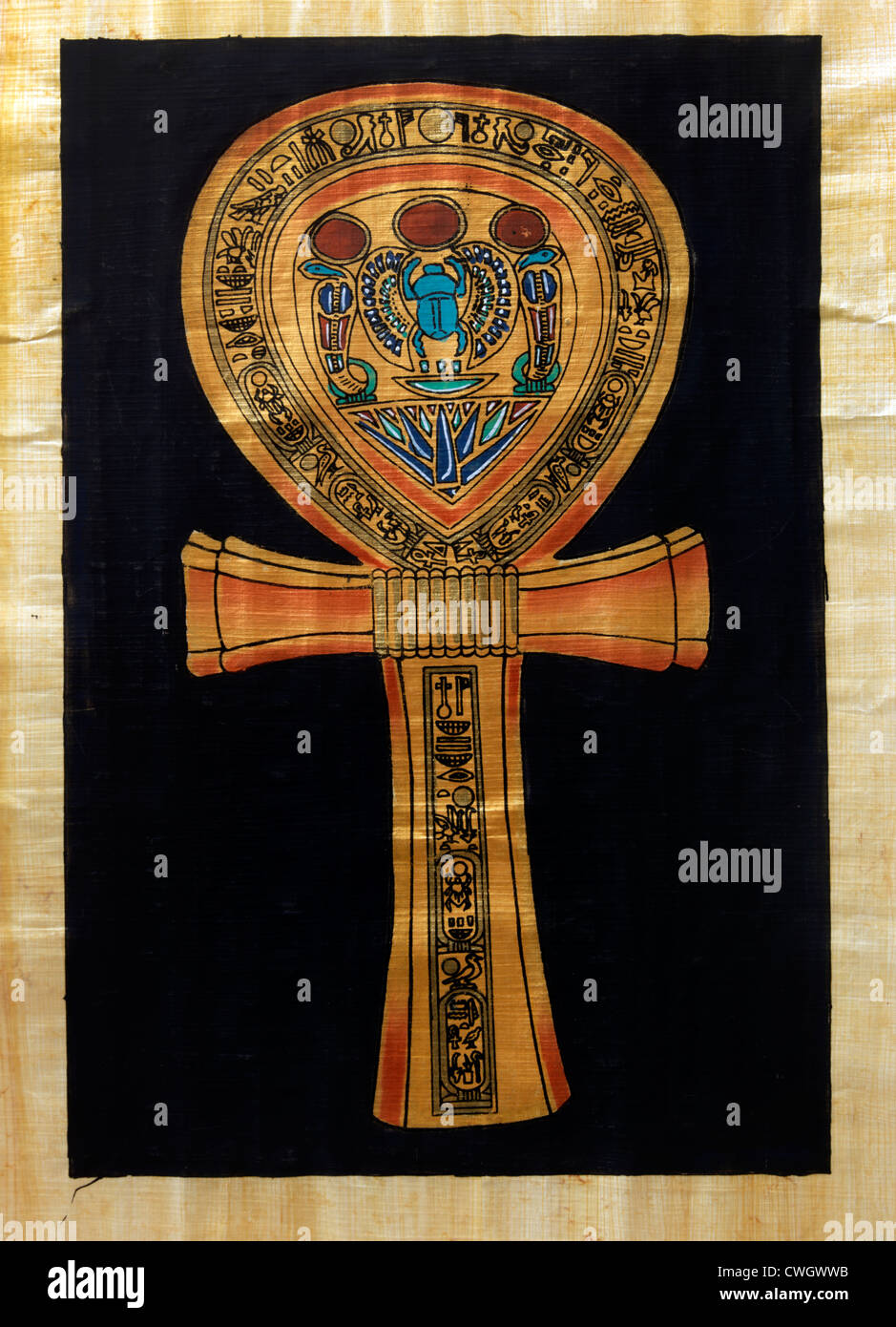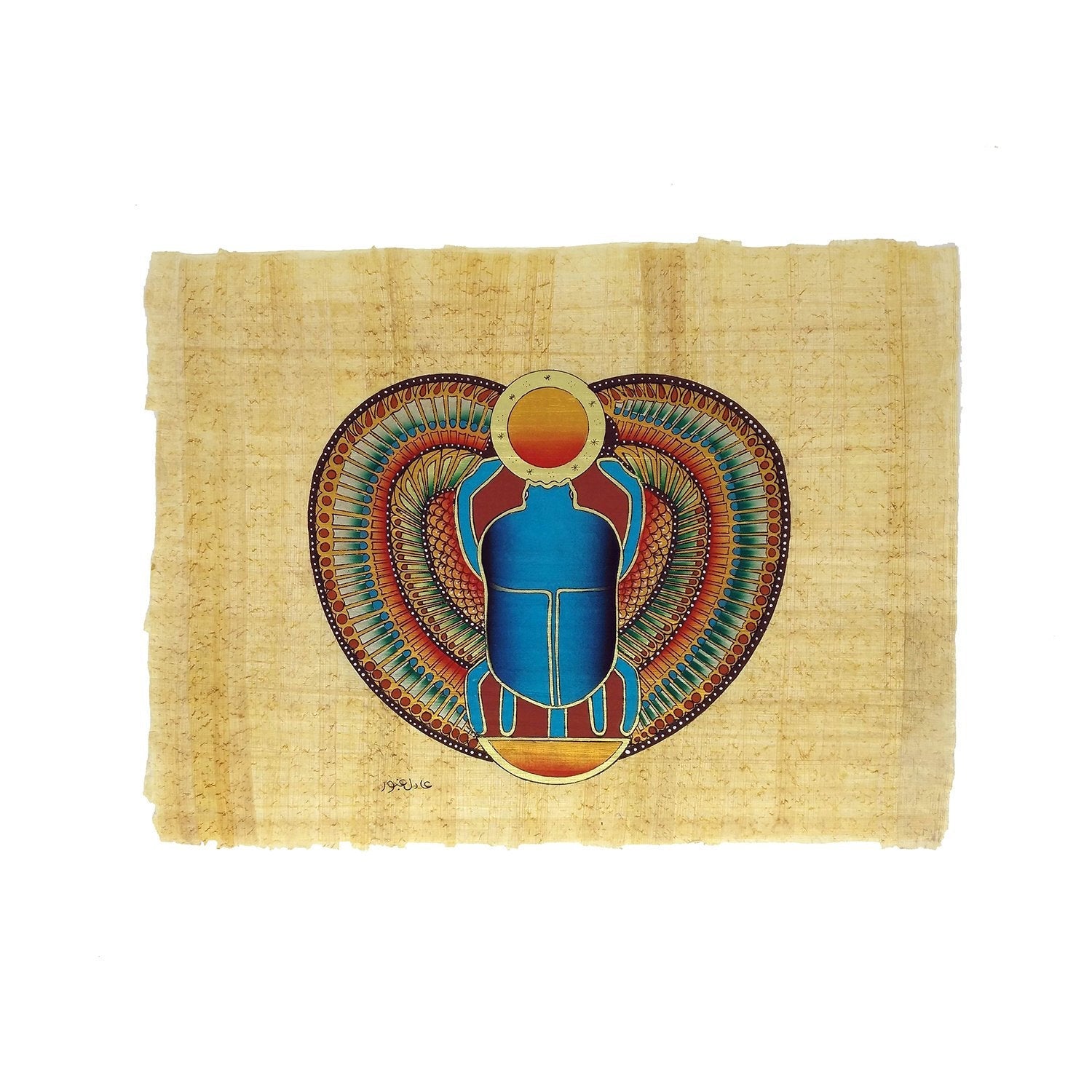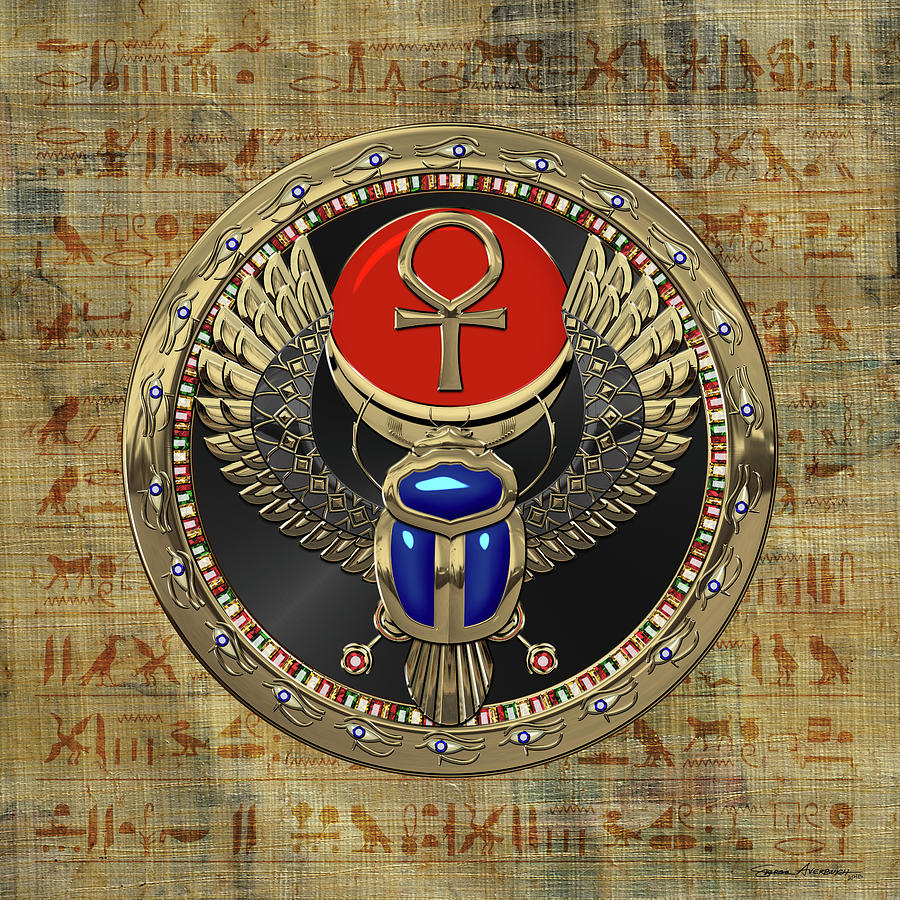
Scarab Ancient Egyptian Papyrus Painting Ancient egyptian artwork
1. Playground Fixtures: Sandbox, Seesaw, Slide, Swing 2. Influence: Clout, Pull, Sway, Weight 3. Egyptian Symbols: Ankh, Crook, Eye, Scarab 4. Fonts: Courier, Impact, Papyrus, Times

Scarab Ancient Egyptian Papyrus Painting Ancient egyptian art
symbolism scarab, in ancient Egyptian religion, important symbol in the form of the dung beetle ( Scarabaeus sacer ), which lays its eggs in dung balls fashioned through rolling.
Scarab with Papyrus Motif Middle Kingdom The Metropolitan Museum of Art
The Ankh is an ancient Egyptian symbol that represents life, fertility, and immortality. It resembles a cross with a loop at the top and is often seen in hieroglyphs as well as carved into tomb walls or placed on sarcophagi. In ancient Egyptian religion, the Ankh held significant spiritual meaning.

Egypt, Papyrus Depicting the Sacred Scarab, Eighteenth Dynasty Giclee
Agroittica Lombarda Group in northern Italy produces 15% of the world's caviar. The group is based in the Lombardy region and is split into two companies: Ars Italica Caviar, which farms sturgeons near the city of Cassolnovo, and Calvisius Caviar, based in Calvisano, where the two companies also share the extraction facility. In total, both farms stretch over 250 acres of land and breed seven.

Scarab Ancient Egyptian Papyrus Painting Arkan Gallery
The Ankh is one of the most recognizable symbols from ancient Egypt, known as "the key of life" or "cross of life" and dated to the Early Dynastic Period (c. 3150 - 2613 BCE). It is a cross with a loop at the top sometimes ornamented with symbols or decorative flourishes but usually just a plain gold cross.. It is an Egyptian hieroglyphic symbol for "life" or "breath of life" (`nh = ankh) and.

Egyptian Papyrus Painting Scarab Papyrus Painting Egyptian Etsy Singapore
The Scarab is flanked most immediately by two columns which each feature a prominent Ankh symbol (in dark blue) and immediately above each Ankh for good measure is a Djed column (in light blue, with alternating red and blue segments in the "spinal" columns at the top of each Djed).

Egyptian Papyrus Painting Of An Ankh With Scarab And Hieroglyphics
of the god Khepri…. - Papyrus of Nesiamsu (Ptolemaic Period) By far the most important amulet in ancient Egypt was the scarab, symbolically as sacred to the Egyptians as the cross is to Christians. Scarabs were already known in the Old Kingdom, and in the First Intermediate Period the undersides were decorated.

Scarab on Papyrus Insect art, Scarab, Found art
The Scarab Papyrus Ankh is a symbolic Egyptian artifact representing life and protection, featuring a scarab beetle on a papyrus scroll with an ankh. This ancient Egyptian talisman is believed to bring good luck, health, and eternal life.

Scarab Ancient Egyptian Papyrus Painting Arkan Gallery
Representing transformation, immortality and resurrection, the iconic scarab is actually a type of dung beetle associated with the gods. Why? The beetle lays its eggs in a ball of dung, which provides its newborns with nourishment once they hatch. The story of the dung beetle was thought to symbolise the way life comes from death.

Premium Vector Egyptian papyrus with pharaoh element ankh scarab sun
The ancient Egyptians used writing to communicate information about a person shown on a sculpture or relief. They called their writing 'divine word' because they believed that Thoth, god of wisdom, had taught them how to write.

The Sacred Scarab Egyptian Papyrus Glowing Painting Unique Etsy
Scarab: Neferkara and Hieroglyphs (ankh and djed signs) Place Egypt (Object made in) Date Dates are not always precisely known, but the Art Institute strives to present this information as consistently and legibly as possible. Dates may be represented as a range that spans decades, centuries, dynasties, or periods and may include qualifiers.

Handpainted Sacred Winged Scarab With Sun Disc Papyrus 30x40cm Son
The majority of design scarabs of the late Middle Kingdom (late Dynasty 12-Dynasty 13, ca. 1850 -1640 B.C.) are decorated with symmetric compositions of hieroglyphs and/or scrolls. These signs are not meant to form words but are chosen for their positive, protective meaning.

Sacred Egyptian Winged Scarab with Ankh in Gold and Gems over Papyrus
Scarab depicting a three-stem papyrus plant flanked by "ankh" signs. Egypt. New Kingdom, Early 18th Dynasty. Glazed composition. L: 1.5; W: 1 cm. Harry Stern Collection, bequest of Kurt Stern, London. Accession number: 76.31.4308. Archaeology/Egyptian Archaeology.

Ancient Egyptian Scarab Beetle Symbol of Rebirth and Rejuvenation, 8.
The tomb of Ramose and Hatnofer was found intact by archaeologists at Sheikh Abd el-Qurna, in Thebes. The scarab is today on display at the Metropolitan Museum of Art This detail scene from the Papyrus of Hunefer (ca. 1375 B.C.) shows Hunefer's heart being weighed on the scale of Maat against the feather of truth, by the jackal-headed Anubis.

Scarab Ancient Egyptian Papyrus Painting Ancient egyptian artwork
1. Ankh The ankh provided the key to the gates of death and what lay beyond. The ankh was the sign of life that indicated the power to give or take away life, and could not be carried by ordinary Egyptians. The original meaning of the "ankh" is still under debate. It has been suggested it was a sandal-strap or a magic knot.

Ankh Ancient Egyptian Papyrus Painting Arkan Gallery
ANKH - the Egyptian hieroglyphic symbol for life PAPYRUS - a sedge plant, a paper made from these plants , a document written on such paper, or a modern font designed to be reminiscent of the.